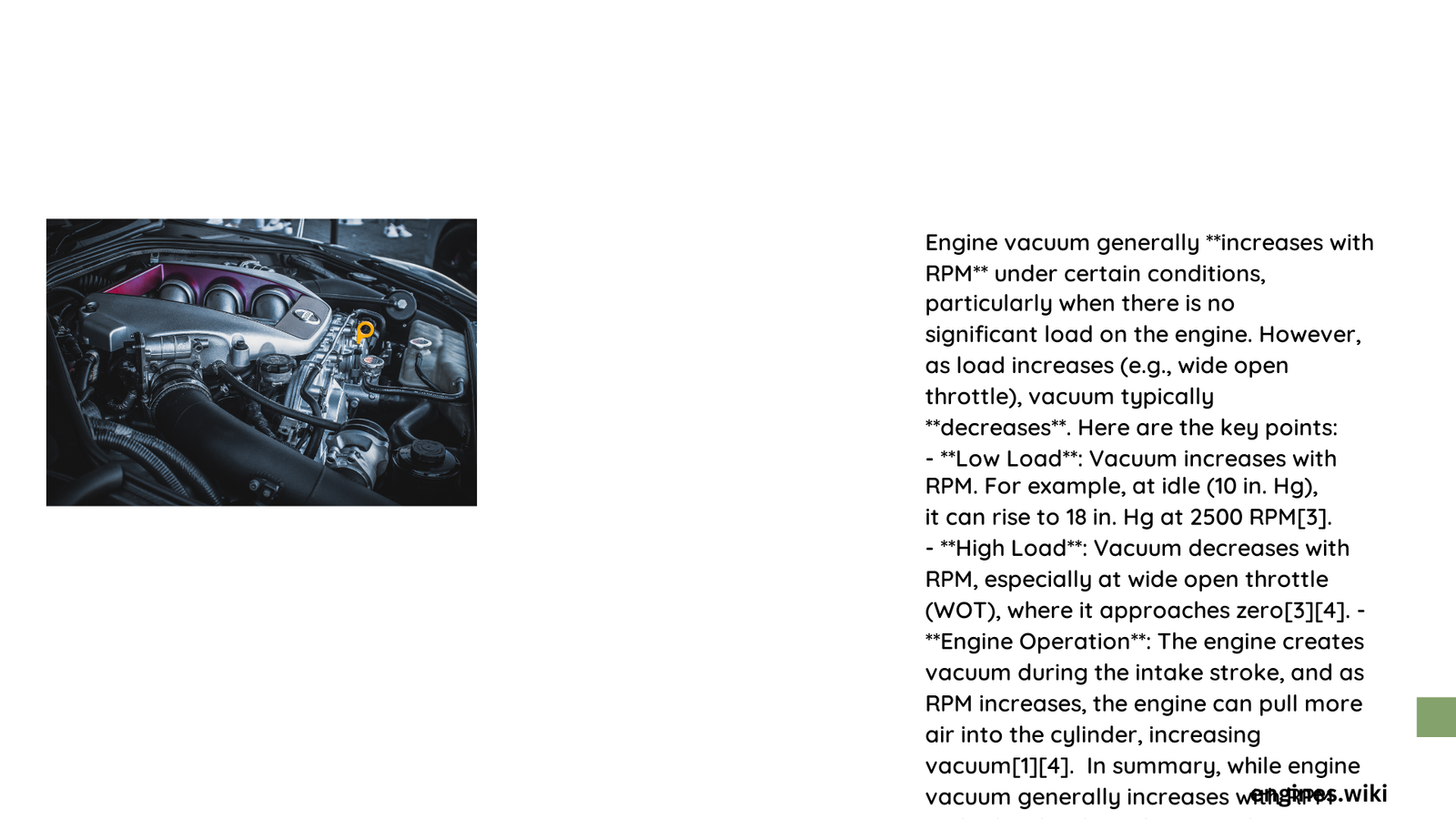Engine vacuum is a critical diagnostic parameter that reveals intricate details about an engine’s operational health and performance. Contrary to common misconception, engine vacuum does not simply increase with RPM. Instead, it follows a complex relationship influenced by multiple factors such as throttle position, engine load, and operational conditions. Understanding these nuanced interactions can provide profound insights into engine mechanics and potential diagnostic challenges.
What Determines Engine Vacuum Behavior?
Engine vacuum is fundamentally a pressure differential measurement within the intake manifold. Its behavior is not a linear function of RPM but depends on several critical variables:
How Does Throttle Position Affect Vacuum?
- Idle Conditions
- Vacuum typically ranges between 17-21 inches of mercury (inHg)
- Throttle is mostly closed, creating significant pressure differential
-
Engine operates at low RPM (600-1000 RPM)
-
Acceleration Scenarios
- Vacuum decreases as throttle opens
- More air enters intake manifold
- Pressure differential reduces
Why Doesn’t Vacuum Increase Directly with RPM?
| RPM Range | Vacuum Characteristics | Typical Readings |
|---|---|---|
| Low (Idle) | Highest Vacuum | 17-21 inHg |
| Medium Load | Moderate Vacuum | 10-15 inHg |
| High Load/WOT | Lowest Vacuum | Near 0 inHg |
The vacuum measurement depends more on:
– Throttle angle
– Engine load
– Intake manifold restrictions
– Cylinder compression
What Causes Vacuum Fluctuations?
Several mechanical and operational factors influence vacuum readings:
- Intake System Integrity
- Vacuum line leaks
- Manifold gasket conditions
- Seal quality
-
Intake manifold design
-
Engine Mechanical Health
- Cylinder compression variations
- Valve seal conditions
- Piston ring wear
- Camshaft performance
Can Vacuum Readings Diagnose Engine Problems?
Vacuum measurements serve as a powerful diagnostic tool:
- Consistent low vacuum might indicate:
- Worn piston rings
- Valve seal deterioration
-
Compression loss
-
Erratic vacuum readings could suggest:
- Vacuum line leaks
- Intake manifold issues
- Potential sensor malfunctions
Technical Insights on Vacuum Measurement

How to Accurately Measure Engine Vacuum?
- Use a calibrated vacuum gauge
- Connect directly to intake manifold
- Measure at stable engine conditions
- Compare readings across different RPM ranges
- Consider manufacturer specifications
Practical Vacuum Testing Techniques
- Idle Vacuum Test
- Measure at steady idle
- Note reading stability
-
Compare with manufacturer specifications
-
Throttle Snap Test
- Rapidly open and close throttle
- Observe vacuum gauge response
- Check for quick stabilization
Advanced Considerations
Modern engines with variable valve timing, turbocharging, and complex intake designs create more nuanced vacuum behaviors. Electronic engine management systems continuously adjust parameters that influence vacuum readings.
Key Takeaways
- Engine vacuum does not increase linearly with RPM
- Vacuum is more dependent on load and throttle position
- Diagnostic value lies in consistent, stable readings
- Multiple factors influence vacuum measurements
Conclusion
Understanding engine vacuum requires moving beyond simplistic RPM-based assumptions. Comprehensive analysis involves considering multiple interconnected systems and their dynamic interactions.
